
UX Case Study For Microtia Interactive Pop-up Book
This interactive book can address the psychological aspects of children with microtia after surgery, using their real-life experiences as a script to help them regain their confidence.
I want to share a project that is my personally experienced.
It’s a special book called — I want to hear you. This book helps children with Microtia feel better emotionally. It encourages them and makes them feel more confident after their surgery. It also wants to teach people about the challenges faced by people with Microtia and reduce biases against them.
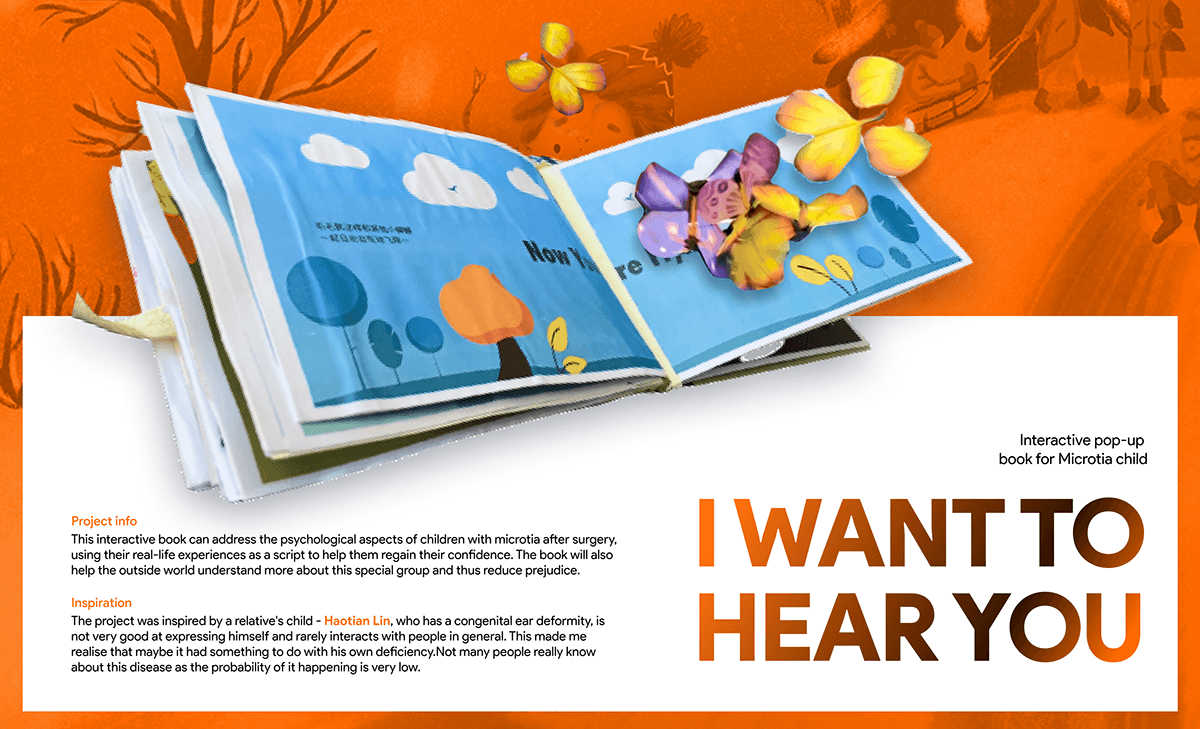
The project was inspired by the child of a relative named Lin Haotian. He is not good at expressing himself and rarely interacts with peers. I realized that his low self-esteem was related to his microtia. Furthermore, he faced discrimination from others due to a lack of understanding of the situation.
Before starting this project, I needed to understand the background of Microtia. I started my research with these questions.
What is microtia?
What is the cause of microtia?
How many babies are born with microtia?
What are the reconstruction options for microtia?
I tried searching on Wikipedia and authoritative medical websites and discovered that microtia is a congenital condition that occurs when the ears are not fully developed during the first 12 weeks of pregnancy. Typically, symptoms of microtia include small and peanut-shaped earlobes, but this is just one of them. So I researched further and found that the four most common types of microtia are ranked by severity. The mildest symptom is a slight external defect, while the most severe symptom is the complete absence of an ear.

According to statistics, there are 4,500 to 7,500 new cases of this rare congenital disease in China every year, with an incidence rate of 3 to 5 cases per 10,000 newborns. This is more common in males. The exact cause of microtia is unknown. In some cases, Microtia occurs due to an abnormality in a single gene, which can lead to a genetic syndrome.

Another known cause of microtia is the ingestion of a drug called isotretinoin (Accutane®) during pregnancy. I found an important report on the CDC about factors that increase the risk of microtia in babies: medication side effects, viral infections, environmental pollution, and genetic inheritance.

To understand current treatments in this area, I reviewed the relevant medical literature. Currently, there are two main surgery options.
One is a prosthetic ear, made of silicone. The advantage is that the surgical trauma is minimal, but the disadvantage is that the prosthesis requires long-term maintenance and the body may reject it.
The second option is surgical reconstruction, which is the most recommended treatment. This method uses the body’s own rib cartilage to carve the ears. The surgical trauma is small and requires the extraction of 7–9 cm of rib cartilage below the chest, and the recovery time is relatively slow.
I also learned that patients undergoing treatment face three inevitable problems. First of all, due to technical limitations, the surgical effect cannot achieve 100% recovery. Secondly, the high cost of surgery makes it difficult for ordinary families to afford it. Third, the optimal age for surgery is 6–8 years old, because bone softness decreases with age.
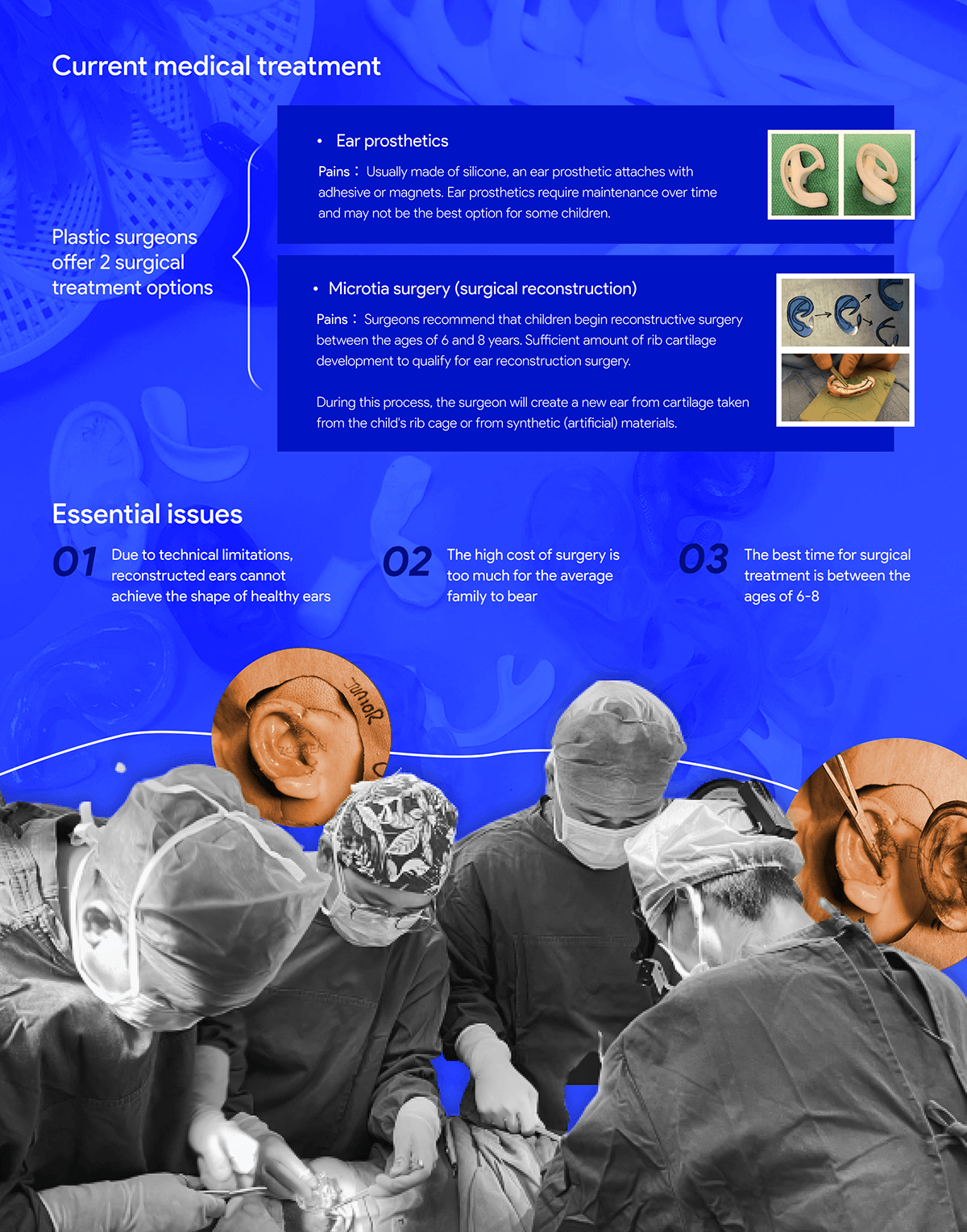
After having a systematic understanding of Microtia, I started user research and listed three key interviewees: doctors, parents, and children with microtia.
Due to the unique nature of this group, conducting face-to-face interviews is challenging. I learned about the real situation of children with microtia by watching documentaries and interviewing parents.
Due to the unique nature of this group, conducting face-to-face interviews is challenging. I learned about the real situation of children with microtia by watching documentaries and interviewing parents.
In the documentary, one can clearly hear different voices from different characters. For example, doctors most directly felt the inferiority complex of children with microtia during the face-to-face consultation process.
Some doctors say they feel frustrated after each surgery because they know there is no way to make the ear 100% normal again. At the same time, children expressed concerns about the environment in which they were raised, such as being teased by classmates, leading to sensitivity to other people’s opinions. Parents feel deeply guilty and even blame themselves for their children.

Another method I used for research was to observe Haotian’s daily life and create a schedule. I invited parents and teachers to help me observe his behavior at home and at school and record it chronologically on a chart. Eventually, I discovered that Lin Haotian likes to be alone, does not socialize much, and does not talk much, but he likes to read, draw, learn musical instruments and other activities alone.
I further conducted face-to-face interviews with the children’s parents and teachers to learn more about their views. Parents reported that their children were willing to confide in them about their emotional distress and feeling rejected by their classmates. The mother also said words of encouragement: “God thinks you are too perfect and wants to give other children a chance.” The teacher was also worried that Lin Haotian’s new ears would be injured during exercise, so he decided to let him stay in the office to study with him.

After completing the entire research, I summarized three pain points:
1. Parental self-blame.
2. The child’s inner insecurity and concern about external judgments.
3. The surgery only addressed the appearance but lacked emotional support.
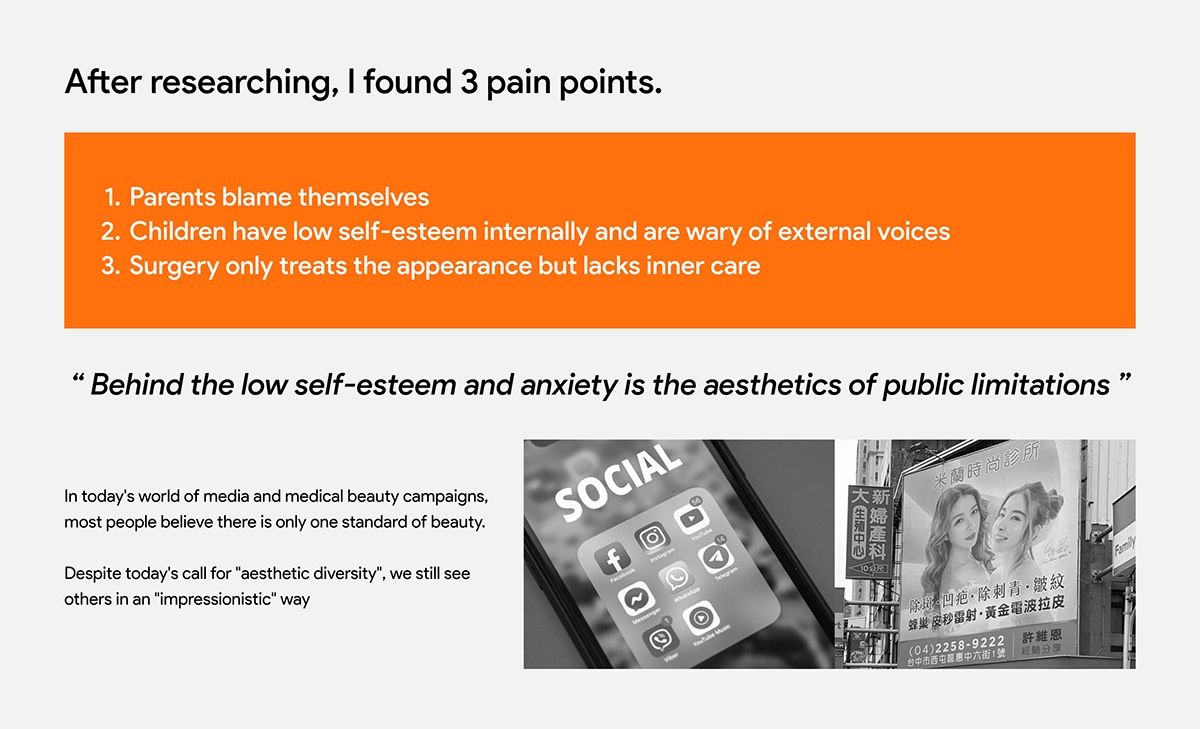
I used an engagement tool called the House-Tree-Person (HTP) test, which asks children to draw a house, a tree, and a person on a piece of white paper. I want to observe the mental state of children with microtia through drawings in the HTP test.

I asked four children with microtia draw their HTPs.
From their drawings, I found their vision for the future, but also varying degrees of self-doubt and fear.
From their drawings, I found their vision for the future, but also varying degrees of self-doubt and fear.

After completing the research, I came up with insights:
1. Increase public awareness of microtia to help children let go of psychological defenses.
2. Help children gain self-esteem, develop their potential and abilities, and have a correct understanding of themselves.
I’ve been looking for ways to emotional healing and finally found inspiration from children’s picture books in bookstores. My design proposal is to create a pop-up illustration book. which has three advantages:
1. Fun interactive features to enhance children’s interest in reading.
2. Easy-to-relate character interactions to resonate with children.
3. Conveying the correct values through story design.

I started exploring pop-up illustration books on the market, not only to understand the current mainstream illustration styles and forms of expression but also to learn about the materials needed for making pop-up books and the requirements for paper.
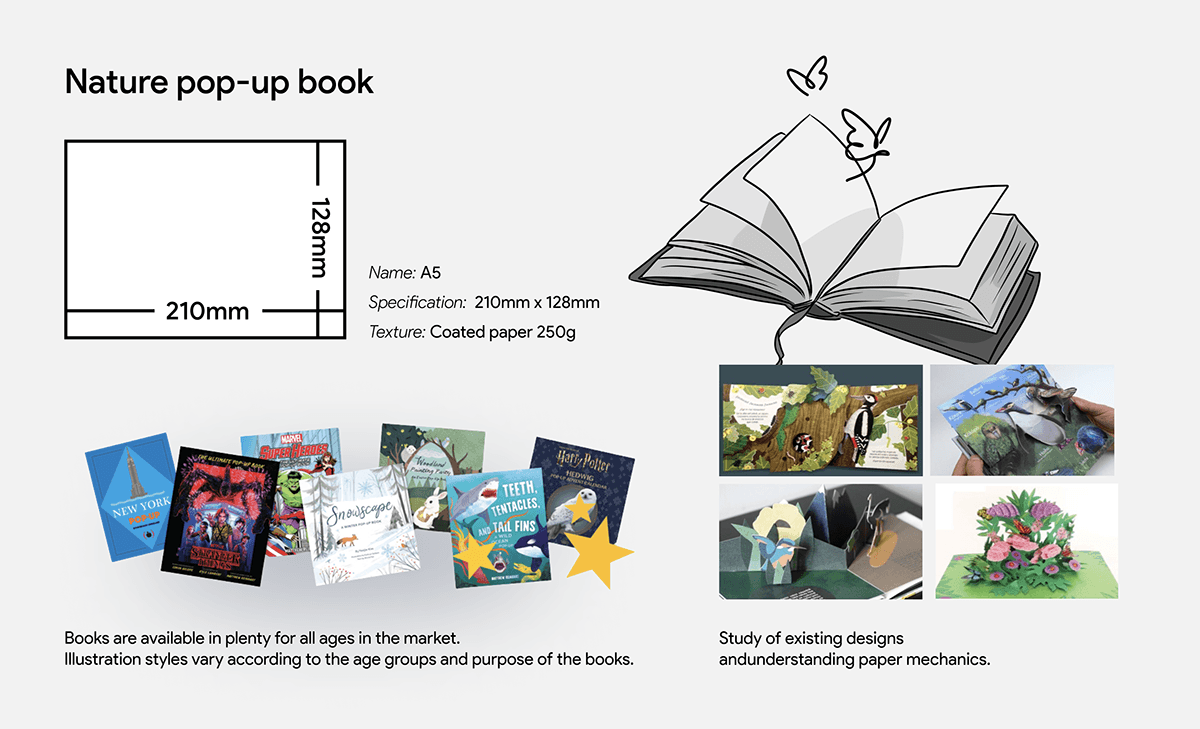
My target audience is children, and in terms of visual style, I’ve defined three keywords: Colorful, Flattening, and Lovely.
In choosing characters, I’ve selected the caterpillar as the protagonist Haotian Lin. This inspiration for the caterpillar comes from a Chinese idiom — “breaking out of the cocoon and turning into a butterfly,” which signifies the process of transformation and overcoming difficulties. And other two insects are portrayed as Haotian Lin’s mocking classmates.

Then I started writing the script:

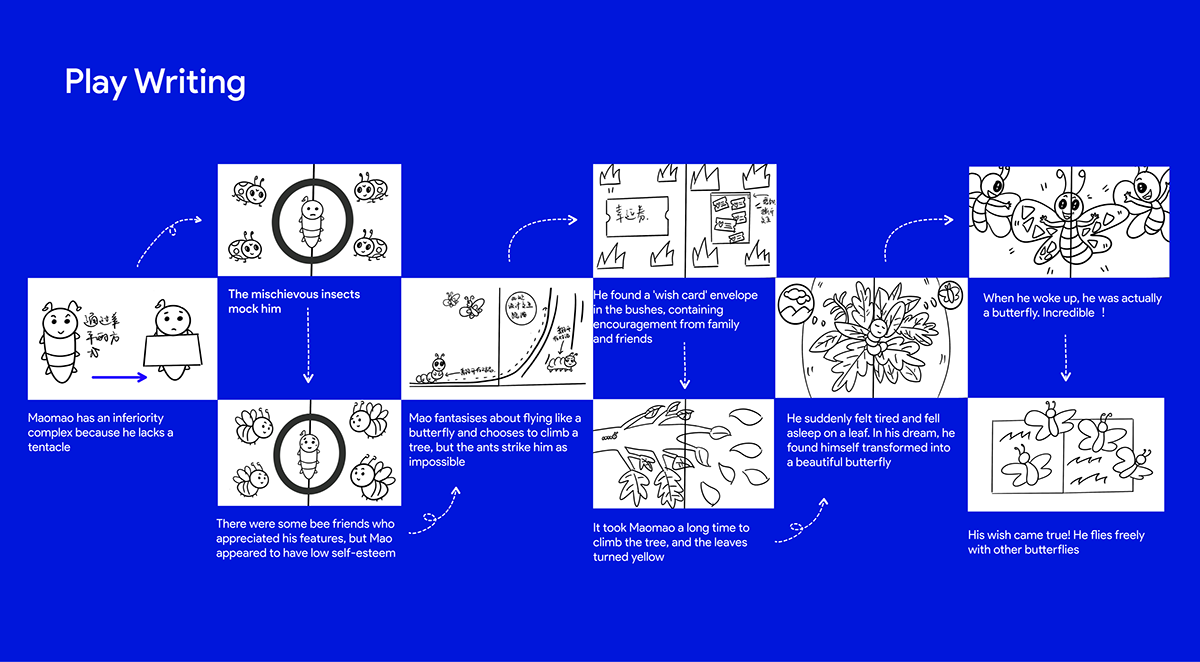
Making the pop-up book involved a lot of interactive elements. I created a simple version of the pop-up book using rough paper during the experiment.

In the process, I found that the paper wasn’t thick enough, and the strings were too short, causing some issues. I continuously improved the complex paper engineering in the middle to ensure the feasibility of the design.
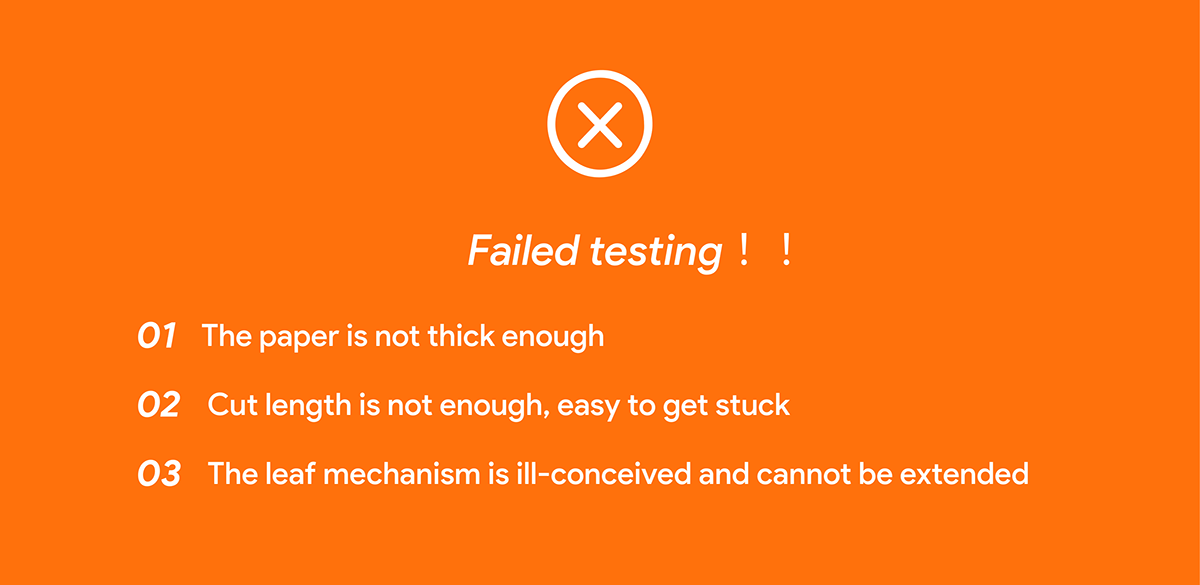
The next step was to create the design.
First, I designed an illustration cover with a caterpillar that has only one antenna and the title “ I want to hear you”, summarizing the story. The caterpillar feels insecure due to being born with only one antenna, despite appearing cheerful on the outside. I used flip cards to show his two emotions. There are two different voices around the caterpillar: one that mocks him and another that likes him.
First, I designed an illustration cover with a caterpillar that has only one antenna and the title “ I want to hear you”, summarizing the story. The caterpillar feels insecure due to being born with only one antenna, despite appearing cheerful on the outside. I used flip cards to show his two emotions. There are two different voices around the caterpillar: one that mocks him and another that likes him.
I designed a sliding interaction, dragging to the right revealing their mocking or encouraging dialogues.
The caterpillar envies the butterflies for seeing the world from above and wishes to climb a tree to do the same. I used flips to depict their conversation in this part. For the tree-climbing interaction, I created a design behind the caterpillar that allows readers to slide along the tree trunk path, enabling them to interact with the caterpillar while reading.
In the design of blessing cards, I incited Haotian Lin’s parents and friends to write encouraging words before his surgery and placed the cards in the envelopes I prepared.
When the caterpillar crawls for a long time. The leaves change from green to yellow.
I made a gradient card and placed it behind the paper so that when dragged, the leaves change color. As a caterpillar sleeps on a leaf, readers experience the 3D leaves popping up as they turn the pages. After trying various options, I created a reversible leaf device.
When the caterpillar wakes up, it turns into a butterfly.
Initially, I drew a flat butterfly, but to add depth to the content, I designed a 3D butterfly so that it pops up when the reader opens the page. Before finalizing the design, I created sketches to test feasibility.
Finally, the caterpillar woke up and turned into a butterfly! I added a happy ending to surprise the reader. So, I combined some creative solutions found online to create some flying butterfly installations. Many butterflies will fly out as readers reach the last page!
I made a gradient card and placed it behind the paper so that when dragged, the leaves change color. As a caterpillar sleeps on a leaf, readers experience the 3D leaves popping up as they turn the pages. After trying various options, I created a reversible leaf device.
When the caterpillar wakes up, it turns into a butterfly.
Initially, I drew a flat butterfly, but to add depth to the content, I designed a 3D butterfly so that it pops up when the reader opens the page. Before finalizing the design, I created sketches to test feasibility.
Finally, the caterpillar woke up and turned into a butterfly! I added a happy ending to surprise the reader. So, I combined some creative solutions found online to create some flying butterfly installations. Many butterflies will fly out as readers reach the last page!

After Haotian’s surgery, I gave him the interactive pop-up book as a gift. After reading the story, he was inspired and became more confident.

In the future, this pop-up book will be printed into a booklet and used as a psychological reading material for children with microtia after surgery.
I hope it can help more children with this situation. It will be placed in hospitals for promotion and distribution to raise awareness of this special group.
I hope it can help more children with this situation. It will be placed in hospitals for promotion and distribution to raise awareness of this special group.



